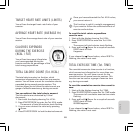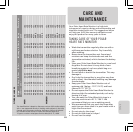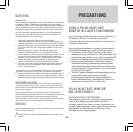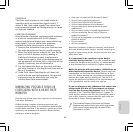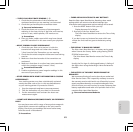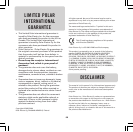
60
BATTERIES
TRANSMITTER
The estimated average battery life of Polar WearLink Transmitter
is 2 years (1 h/day, 7 days/week) and other Polar transmitters
2,500 hours of use. If your transmitter stops working, it might be
due to the battery running out. We recommend that you have
the battery replaced by an authorized Polar Service Center only.
You can, however, change the battery of the Polar WearLink
Transmitter yourself by following the instructions below. To
change the battery, you need a coin.
1. Open the connector’s battery cover by turning it
counterclockwise with the coin from the CLOSE position to
the OPEN position. The cover pops out a little from its niche.
2. Remove the battery cover from the connector, lift the battery
from the niche with your fingers and replace it with a new
battery.
3. Place the negative (-) side of the battery against the
connector and the positive (+) side against the cover.
4. Put the battery in the connector’s niche and put the cover on
so that the arrow points to the OPEN position. Make sure
that the cover’s sealing ring is placed correctly in its groove.
5. Gently press the cover deep enough so that its exterior
surface is on the same level as the connector’s surface.
6. Turn the cover with the coin clockwise so that the arrow on
the cover turns from OPEN to CLOSE. Make sure that the
cover is closed properly!
In order to ensure the maximum life span of the connector’s
battery cover, open it only when you need to change the
battery. We recommend that you change the sealing ring of
the battery cover every time you change the battery. You can
get these sealing rings from authorized Polar Service Centers.
POLAR WRIST RECEIVER
The estimated average battery life of the Polar wrist receiver is
2 years in normal use (1 h / day, 7 days a week). Note also that
excessive use of the backlight and the alarm signals will use the
battery more rapidly.
Do not open the Polar wrist receiver yourself. To ensure the
water resistance properties and the use of qualified components,
the wrist receiver battery should be replaced only by an
authorised Polar Service Centre. At the same time a full periodic
check of the Polar Heart Rate Monitor will be done.
SERVICE
We recommend that you have all service done by an authorized
Polar Service Center only.
Water resistance cannot be guaranteed after unauthorized
service.
PRECAUTIONS
USING A POLAR HEART RATE
MONITOR IN A WATER ENVIRONMENT
Your Polar Heart Rate Monitor is water resistant to
30 meters/ 100 feet. To maintain the water
resistance, do not operate the buttons of the wrist
receiver under water.
Heart rate measurement in a water environment is
technically demanding for the following reasons:
• Pool water with a high chlorine content and
seawater are very conductive. The electrodes of a
transmitter may short-circuit, which prevents EKG
signals from being detected by the transmitter.
• Jumping into the water or strenuous muscle
movement during competitive swimming may
cause water resistance that shifts the transmitter
on the body to a location where it is not possible
to pick up EKG signal.
• The EKG signal strength varies depending on the
individual’s tissue composition and the
percentage of people who have problems in
heart rate measuring is considerably higher in a
water environment than in other use.
POLAR HEART RATE MONITOR
AND INTERFERENCE
ELECTROMAGNETIC INTERFERENCE
Disturbances may occur near high voltage power
lines, traffic lights, overhead lines of electric
railways, electric bus lines or trams, televisions, car
motors, bike computers, some motor driven exercise
equipment, cellular phones or when you walk
through electric security gates.






